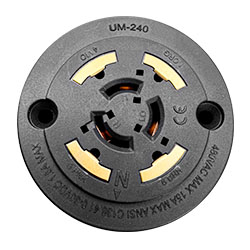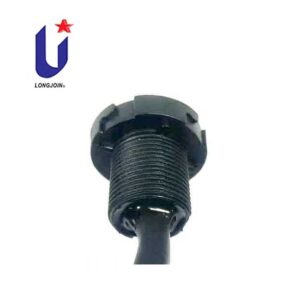NEMA Standard Interface Photocells: The Core of Future Streetlight Control
Introduction
Streetlighting has evolved from basic illumination to intelligent, adaptive systems. Cities worldwide are adopting smart streetlights to improve energy efficiency and urban safety. A key component in this transformation is the NEMA standard interface photocell.
These devices are vital in enabling streetlights to function intelligently. They help automate lighting schedules, reduce energy waste, and provide remote control capabilities. Cities depend on them to achieve cost savings while enhancing sustainability. This article explores their features, applications, and potential future developments.
Overview of NEMA Standard Interface
Definition of NEMA Standard Interface
The NEMA standard interface defines a universally compatible socket design. It allows easy integration of photocells into streetlights. These interfaces ensure a plug-and-play experience for both installers and maintenance teams.
The interface includes a weatherproof housing that protects the electrical connections. This robust design ensures durability in outdoor conditions. By standardizing the interface, manufacturers ensure cross-compatibility across lighting products.
Role in Streetlight Control Systems
NEMA standard interfaces play a foundational role in modern lighting systems. Photocells connected through these interfaces control lighting based on environmental conditions. They monitor ambient light levels, turning lights on at dusk and off at dawn.
Advanced systems offer additional features like adaptive dimming and motion-based illumination. These functionalities improve energy efficiency while maintaining safety. The modular nature of the NEMA interface also allows for upgrades. Cities can add sensors or wireless control modules without replacing the entire system.
Trends in Smart Streetlighting
The Rise of Smart Lighting
Smart streetlights are becoming essential in modern urban planning. They provide better control and data-driven insights. These systems integrate technologies like IoT, wireless communication, and AI.
The global smart lighting market has grown exponentially. Governments and municipalities are prioritizing energy efficiency. Smart streetlights meet these needs by combining functionality and sustainability.


Key Market Drivers
Several factors are driving the adoption of smart streetlights:
- Energy Savings: Smart systems reduce energy consumption by up to 50%.
- Sustainability Goals: Governments are implementing policies to lower carbon emissions.
- Cost Efficiency: Remote monitoring minimizes maintenance costs.
NEMA standard interfaces make this transition smoother. They allow quick upgrades and compatibility with existing infrastructure. This flexibility is crucial for cities planning long-term investments in smart lighting.
Advantages of NEMA Standard Interface Photocells
Ease of Installation and Maintenance
The plug-and-play design of NEMA standard interfaces simplifies installation. Technicians can replace faulty photocells within minutes. This reduces downtime and labor costs.
Additionally, the standardized interface ensures that replacement parts are widely available. This compatibility minimizes logistical challenges for maintenance teams.
Enhanced Compatibility
NEMA standard interfaces work with various streetlight models. Whether a city uses LED fixtures or traditional lamps, these interfaces fit seamlessly. This broad compatibility reduces the complexity of managing diverse lighting systems.
Energy Efficiency
Energy efficiency is a significant advantage of NEMA photocells. They automatically adjust lighting based on ambient light levels. This prevents unnecessary energy consumption during the day.
Many systems also offer dimming capabilities. Streetlights can operate at reduced brightness during low-traffic hours. This feature extends the lifespan of bulbs and further saves energy.
Future-Proof Design
NEMA interfaces are designed for scalability. Cities can add advanced features like air quality sensors or traffic monitors. These upgrades transform streetlights into multifunctional urban assets.
By supporting modular upgrades, NEMA standard interfaces future-proof city lighting systems. Municipalities can adapt to technological advancements without significant reinvestment.
Case Studies
City-Wide Smart Lighting in Amsterdam
Amsterdam upgraded its streetlights with NEMA standard interface photocells. The project involved replacing 120,000 streetlights with smart lighting.
The results were remarkable. Energy usage dropped by 40%, and maintenance became more efficient. Adaptive lighting improved road safety and pedestrian visibility.
Rural Electrification in India
In rural India, solar streetlights with NEMA photocells transformed communities. These off-grid systems provided reliable lighting for villages.
The photocells enabled dusk-to-dawn operation. They also optimized energy storage, ensuring consistent performance. This initiative demonstrated the versatility of NEMA-standard systems.
Smart City Initiative in Los Angeles
Los Angeles implemented a smart lighting network using NEMA-standard interfaces. The city upgraded over 150,000 streetlights with intelligent controls.
This system included remote monitoring and diagnostics. Maintenance teams could address issues proactively, reducing operational costs. The project saved millions in energy expenses annually.


Future Prospects
Technological Advancements
NEMA photocells are set to become more sophisticated. Features like AI-driven adjustments and predictive analytics are in development. These technologies will optimize lighting schedules further.
Wireless communication modules will also become standard. This will allow real-time data exchange between streetlights and central systems. Such advancements will enhance urban management capabilities.
Increased Market Adoption
More cities are investing in smart streetlighting. Governments are offering subsidies for energy-efficient projects. This trend ensures the continued adoption of NEMA-standard systems.
Developing countries are also recognizing their benefits. Affordable solutions powered by renewable energy are gaining traction in these regions.
Sustainability Goals
NEMA-standard photocells align with global sustainability targets. They support renewable energy integration, such as solar-powered streetlights. These systems reduce reliance on traditional energy sources.
As cities strive for carbon neutrality, NEMA photocells will play a crucial role. They enable smarter, greener urban environments.
Wrap Up
NEMA standard interface photocells are a cornerstone of intelligent streetlighting. They combine efficiency, compatibility, and adaptability. Cities worldwide benefit from reduced energy costs and enhanced safety.
The future of these systems is bright. Technological advancements will make them smarter and more versatile. As sustainability becomes a global priority, their importance will grow.
NEMA standard interface photocells are shaping the future of urban lighting. They ensure that streetlights are not just functional but also intelligent and sustainable.
FAQs
What is a NEMA standard interface photocell?
A NEMA standard interface photocell is a device that connects to streetlights using a standardized socket. It automates lighting by turning lights on and off based on ambient light levels.
Why are NEMA photocells important for smart streetlighting?
NEMA photocells ensure easy installation, compatibility, and energy efficiency. They also enable advanced features like adaptive dimming and remote control.
Can NEMA photocells work with renewable energy systems?
Yes, NEMA photocells are compatible with solar-powered or off-grid streetlighting systems. They optimize energy storage and distribution for efficient operation.





